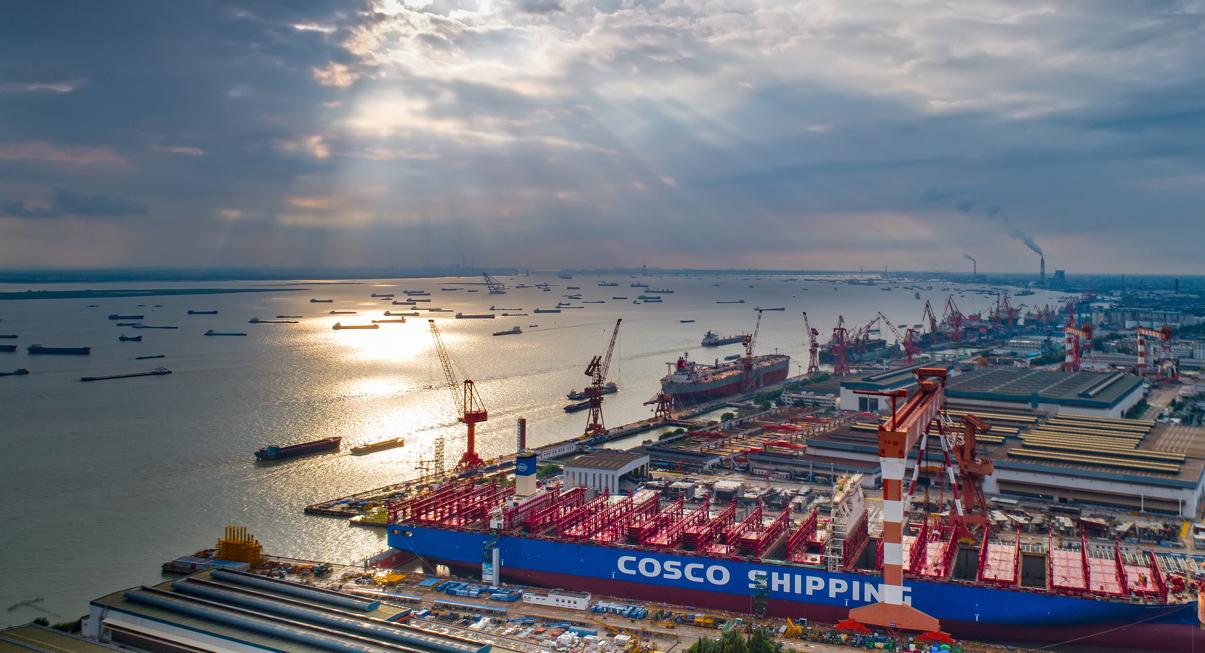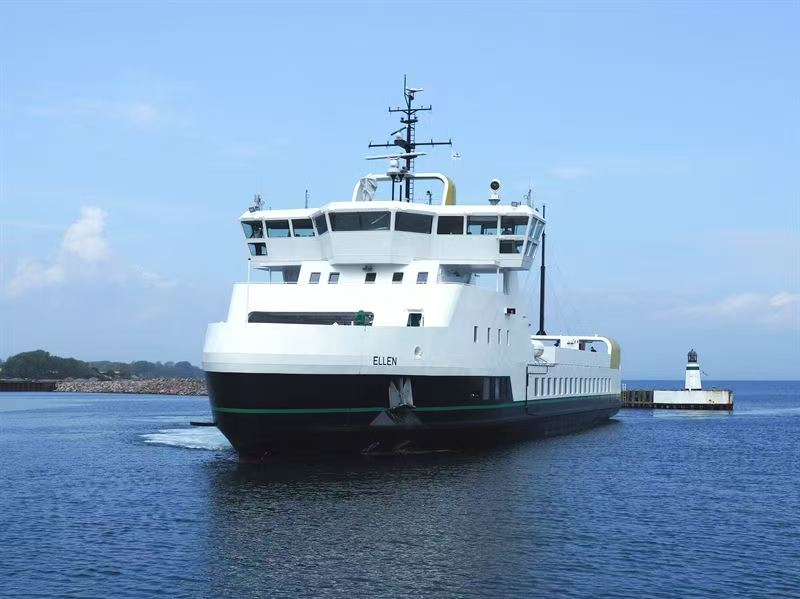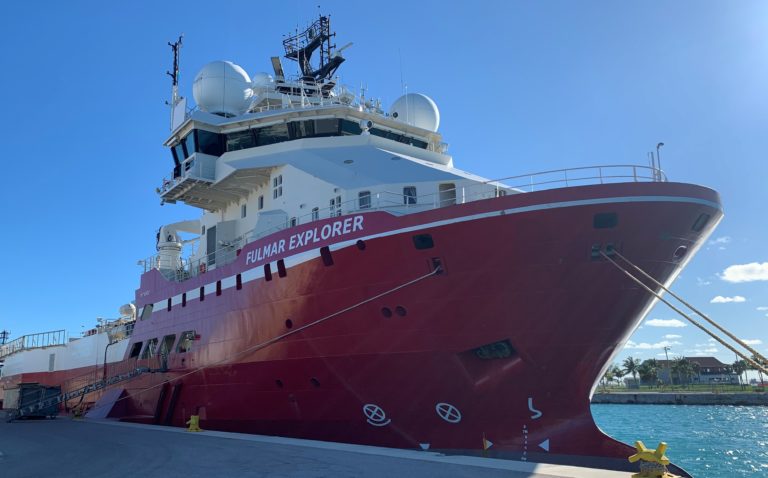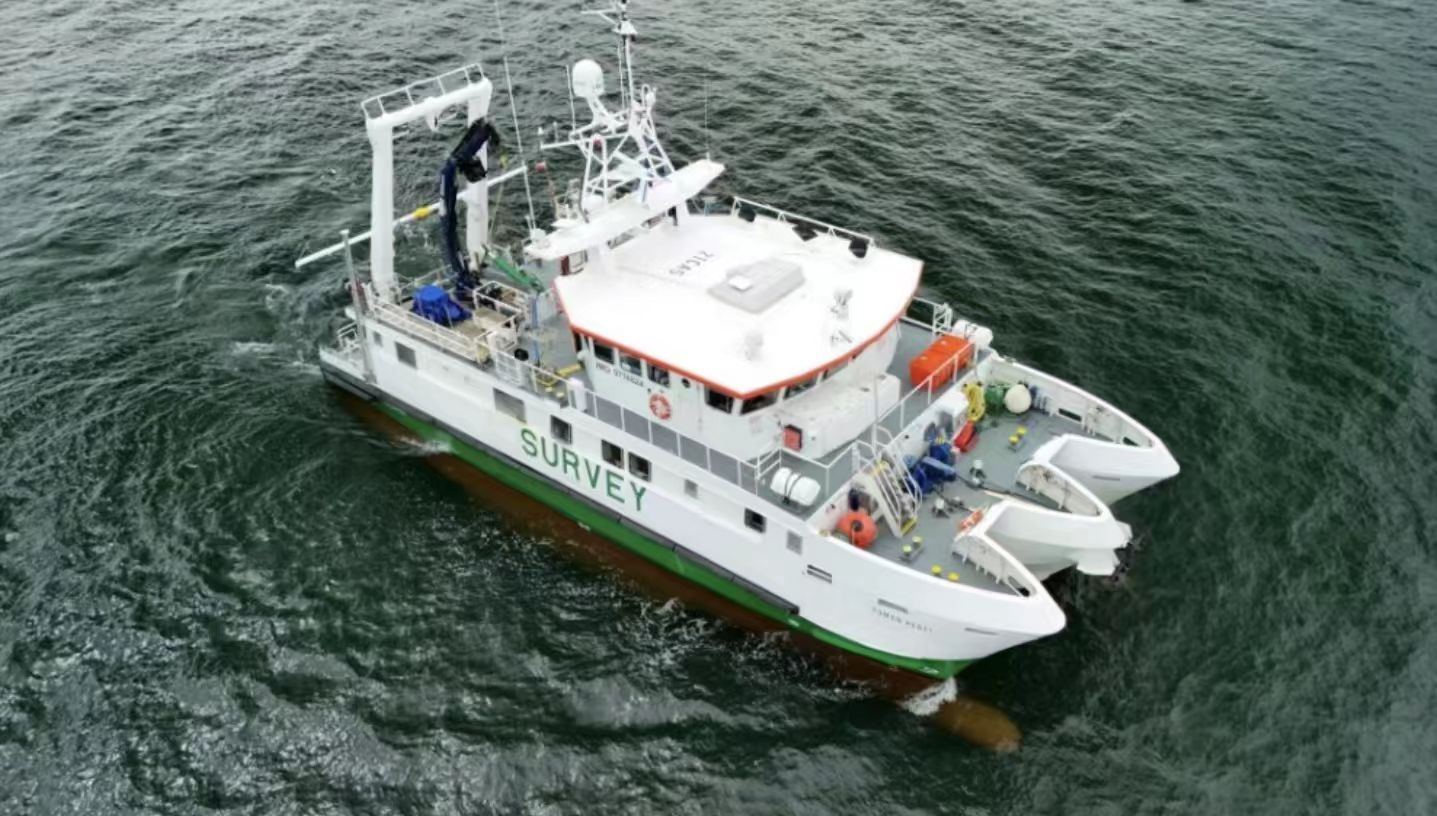维京航运将部署“全球最大”纯电动渡轮运营赫尔辛基-塔林航线
作者: 发布时间:2025年06月08日 浏览量:159 字体大小: A+ A-
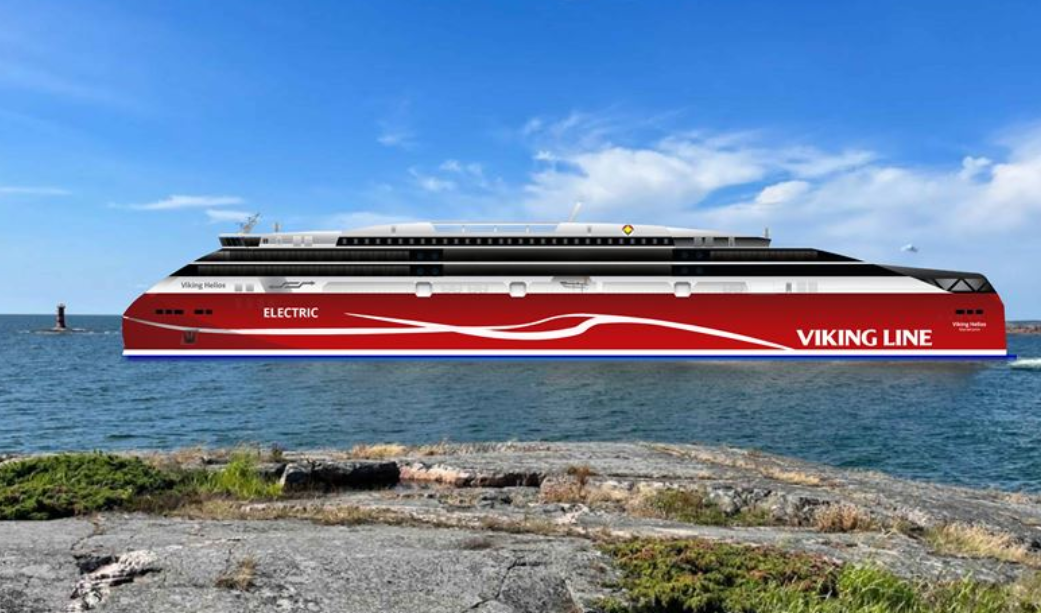
图片来自网络,版权属于原作者
来源:Offshore Energy 2025-06-06
翻译:国际海事信息网 檀智 张运鸿
芬兰航运公司维京航运(Viking Line)将在赫尔辛基和爱沙尼亚塔林之间开通一条零排放航线,该航线将由号称“全球最大”的纯电动客货两用渡轮提供服务。
据披露,维京航运已向欧盟创新基金(EU’s Innovation Fund)提交了建造该渡轮的资金申请。这艘命名为“赫利俄斯号”(Helios)的渡轮最快可能在2030年代投入芬兰湾运营。
该渡轮概念由维京航运团队开发,基于这家芬兰公司与造船商Rauma Marine Constructions以及多家其他合作伙伴的研究协作。
据报道,该渡轮将配备约85-100兆瓦时(MWh)的电池容量。它可在短短两个多小时内在芬兰湾运送多达2000名乘客。据披露,该概念船的长度为195米,宽度预计为30米,航速预计约为23节。
维京航运表示,该渡轮将需要超过30兆瓦时的充电能力。
维京航运首席执行官扬·汉塞斯(Jan Hanses)在谈到这一进展时表示,就建立爱沙尼亚和芬兰之间的绿色海上走廊而言,这对赫尔辛基和塔林港口都是一个“绝佳机会”。
“电动航运不仅仅靠船舶投资就能实现。它还需要港口高效、可靠的充电基础设施。新电动船的母港将是耶特凯萨里港(Jätkäsaari),赫尔辛基港正在那里实施一项持续到2032年的发展和扩建计划。该项目的进展对我们自身的计划至关重要,”他进一步阐述道,并补充说公司计划预订至少两艘船来服务这条计划中的航线。
芬兰湾的零排放航运由FIN-EST绿色走廊项目推动,该项目由赫尔辛基和塔林两座城市于2023年10月启动。创始成员和成员还包括赫尔辛基港和塔林港、爱沙尼亚气候部、维京航运、Rederi AB Eckerö和Tallink Grupp。
FIN-EST绿色走廊项目于2024年10月批准了19个联合项目,涵盖一系列支持气候中和的举措,标志着该愿景进入下一阶段。
据了解,赫尔辛基港的大部分客运和货运流量都是前往爱沙尼亚。根据该港口的预测,从赫尔辛基西港(West Harbour)到塔林的客运量可能从2024年的550万人次猛增至2040年的1160万人次。货运量预计也将增长。
“赫尔辛基-塔林航线去年的表现尤其出色,我们相信运量将继续增长——芬兰和波罗的海国家之间的连接需求强劲。欧盟排放交易费和日益严格的法规每年都给基于化石燃料的海上运输带来越来越大的负担,但零排放技术将使我们能够增加该航线的运力,”汉塞斯评论道。
过去几年,维京航运通过投资估计数亿欧元用于新技术,稳步迈向低排放航运——乃至净零排放。
例如,该公司2013年建造的客船“维京荣耀号”(Viking Grace)被称为全球首艘同时使用液化天然气(LNG)和生物气作为燃料的同类型船舶。2021年,芬兰Norsepower公司开发的旋翼帆技术在“维京荣耀号”上完成了试验测试,展示了风能推进与双燃料规格相结合的潜力。2022年,该公司又在其船队中增加了悬挂芬兰国旗、以液化天然气为动力的“维京荣光号”(Viking Glory)。
除了液化天然气,该公司还采用了生物燃料的使用。需要提醒的是,2025年1月,维京航运公布了一项基于生物燃料的可持续举措,旨在减少其赫尔辛基航线上三艘船舶会议旅行所产生的温室气体(GHG)排放。
(本文版权归国际海事信息网所有,图片版权归原作者,转载请注明出处。)
Finland-based shipping company Viking Line is to launch an emission-free route between Helsinki and Tallinn, Estonia, which will be serviced by what is hailed as “the world’s biggest” all-electric passenger car ferry.
As disclosed, Viking Line has submitted a funding application to the EU’s Innovation Fund for the construction of the ferry. Christened Helios, the vessel could enter service in the Gulf of Finland as soon as the 2030s.
Developed by Viking Line’s team, the ferry concept was based on a research collaboration between the Finnish firm, shipbuilder Rauma Marine Constructions and a number of other partners.
The ferry will reportedly be equipped with a battery capacity of around 85-100 megawatt hours (MWh). It is set to transport up to 2,000 passengers across the Gulf in just over two hours. As disclosed, the length of the concept vessel is 195 meters. Its width is envisioned to be 30 meters, while the unit is projected to achieve a speed of approximately 23 knots.
According to Viking Line, the ferry will necessitate a charging capacity of over 30 MWh.
Speaking on the development, Viking Line’s CEO Jan Hanses said that this was a ‘great opportunity’ for both Helsinki and Tallinn ports in terms of the establishment of a green maritime corridor between Estonia and Finland.
“Electric shipping is not created solely by ship investments. It also requires efficient, reliable charging infrastructure in ports. The home port for the new electric vessels would be Jätkäsaari, where the Port of Helsinki has a development and expansion programme underway until 2032. The progress of this project is extremely important for our own plans,” he further elaborated, adding that the company has plans to book at least two units that would service the planned route.
Emission-free shipping in the Gulf of Finland is promoted by the FIN-EST Green Corridor project, which was implemented by the cities of Helsinki and Tallinn in October 2023. Founders and members also include the ports of Helsinki and Tallinn, Estonia’s Ministry of Climate, Viking Line, Rederi AB Eckerö and Tallink Grupp.
The FIN-EST Green Corridor greenlit 19 joint projects covering an array of initiatives that would support climate neutrality in October 2024, signalling the next stage of this vision.
As understood, most passenger and freight traffic from the Port of Helsinki is bound for Estonia. Per the port’s predictions, passenger traffic between the city’s West Harbour and Tallinn could balloon from 5.5 million in 2024 to 11.6 million passengers by 2040. Cargo volumes are also anticipated to grow.
“The Helsinki–Tallinn route performed particularly well last year, and we believe volume will continue to increase – there is strong demand, based on need, for connections between Finland and the Baltic. EU emissions trading fees and tightening regulations place an ever larger burden on fossil fuel-based maritime traffic every year, but emission-free technology would enable us to increase capacity on the route,” Hanses remarked.
Over the past years, Viking Line has steadied its course toward low-emission shipping – and Net Zero – by investing what is estimated to be hundreds of millions of euros in new technologies.
For instance, the shipping player’s 2013-built passenger vessel Viking Grace was described as the ‘world’s first’ unit of its type to use both liquefied natural gas (LNG) and biogas as fuel. In 2021, trial testing of rotor sail technology developed by Finland’s Norsepower onboard Viking Grace was wrapped up, showcasing the potential of wind propulsion combined with dual-fuel specifications. In 2022, the company added the Finnish-flagged LNG-powered Viking Glory to its roster.
In addition to liquefied natural gas, the company has also embraced the use of biofuel. To remind, in January 2025, Viking Line unveiled its biofuel-based sustainable effort for cutting down on greenhouse gas (GHG) emissions from conference trips on three vessels on its Helsinki routes.
来源:simic



